Jun 06, 2025
Author:Sam Wonder
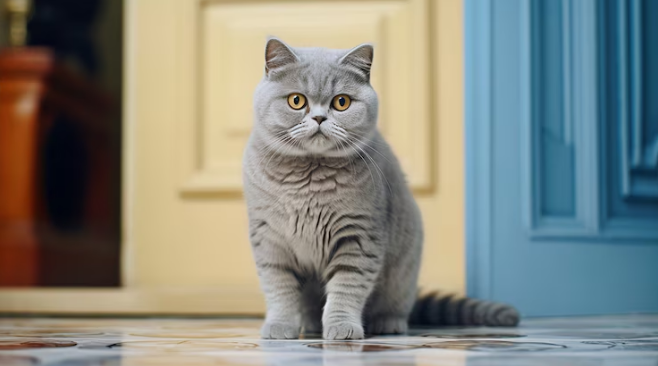
Ever wondered why some American Shorthairs look sleek and silver, while others show up with bold tabby stripes or rare calico patterns? It’s not random. It’s genetic. And it says more about your cat than you might expect.
Color isn’t just about looks. It reflects bloodlines, health markers, personality cues, and sometimes, price tags. But here’s the twist: not all American Shorthair colors are recognized the same way. Some are favored in cat shows. Others? They raise questions about purity or crossbreeding.
If you’re trying to figure out what your cat’s coat means—or you’re looking to identify or select one—you’re in the right place. This article breaks down every major color and pattern, why it matters, and what you should do with that knowledge. Let’s break the myths and decode the coat.
American Shorthairs wear some of the most recognizable coats in the cat world—but there’s more variety than most people expect. These cats come in more than 80 officially recognized color and pattern combinations, each with its own backstory, genetic triggers, and even show eligibility.
Some colors are linked to classic American Shorthair bloodlines. Others have emerged through selective breeding or recessive genes passed down quietly over generations.
Here’s how the full range breaks down:
Solid Colors
These coats are a single, unbroken color from nose to tail—no stripes, no spots, no white patches. Common solid colors include:
● Black – A deep, inky coat with a glossy finish.
● White – Pure snow-white with pink features; can carry deafness genes.
● Blue – A soft, grayish hue that reads cool and elegant.
● Red – Bright, coppery orange that stands out fast.
● Cream – A paler, pastel version of red—subtle and rare.
Tabby Patterns
This is the most iconic American Shorthair look. The tabby isn’t a color—it’s a pattern layered on a color base. You’ll find:
● Classic tabby – Bold, swirling marbled patterns across the sides.
● Mackerel tabby – Vertical stripes, like fishbones, evenly spaced.
● Spotted tabby – Dots or broken stripes along the flanks.
● Ticked tabby – Each hair is banded, giving a salt-and-pepper look.
Silver tabby, in particular, defines the breed for many enthusiasts.
Bi-Color and Calico Combinations
When a solid or tabby mixes with white, you get bi-color patterns. These can appear randomly splashed or evenly balanced. Common examples:
● Black and white – Often called “tuxedo” style.
● Blue and white – A cooler variation that softens the contrast.
● Calico – A mix of white, black, and red patches—always female.
● Dilute calico – Blue, cream, and white—more muted, but genetically identical.
Smoke and Shaded Coats
These look solid until the fur moves. Each hair is light at the root and dark at the tip. They’re dramatic in motion.
● Smoke – Solid-looking at first glance but smoky when in motion.
● Shaded silver – Pale base with darker tips, especially on the back and tail.
● Chinchilla – A nearly white coat with light silver dusting on the top layer.
Tortoiseshell and Torbie
These coats are chaotic but beautiful. Always female, and always a patchwork of reds and blacks or their dilute versions.
● Tortoiseshell – No white; just interwoven black and red or blue and cream.
● Torbie – A tortoiseshell with tabby striping—also called patched tabby.
American Shorthair cats may carry multiple color genes, so some variations don’t show up in kittens but appear later through selective breeding. Others are rare due to breed standards or because they’re not favored in competitive shows.
Understanding what these colors mean isn’t cosmetic—it helps you decode health risks, grooming needs, and even behavioral patterns tied to genetics.
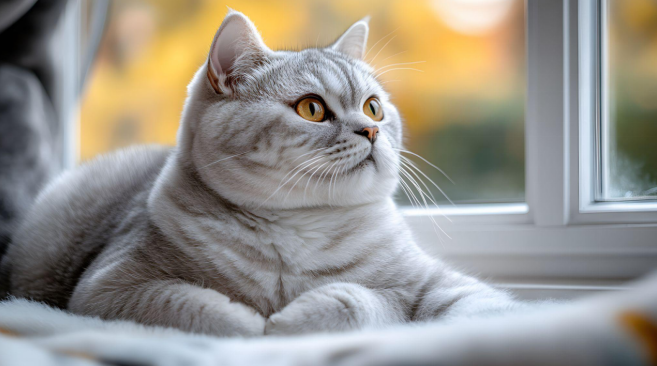
American Shorthairs are recognized for their broad genetic diversity, but in the context of breed standards, not all colors carry equal weight. Some appear across generations with predictable consistency. Others are genetically recessive, linked to sex chromosomes, or require selective linebreeding to appear at all.
This section classifies colors not just by visibility but by genetic likelihood, breed standard acceptance, and frequency across certified bloodlines.
Standard Colors and Patterns
These are widely accepted by major registries like CFA (Cat Fanciers' Association) and TICA (The International Cat Association), and they dominate both pedigreed show lines and household pets.
This is the breed-defining coat. The silver base comes from the inhibitor gene (I/i), which suppresses pigment in the undercoat, producing a bright, pale background. The classic tabby pattern—caused by the mc/mc genotype—creates bold, swirled markings across the torso and tail.
● Gene interaction: I/i (silver) + mc/mc (classic tabby)
● Color base: Black (dominant eumelanin)
● Relevance: Most frequently bred and promoted in shows
This pattern features warm copper to brownish backgrounds with dark stripes or swirls. It’s genetically dominant and doesn’t rely on the inhibitor gene, which makes it common in both show-quality and pet-quality cats.
● Gene interaction: M/M or M/mc (mackerel), with full pigment expression
● Color base: Black with agouti banding
● Relevance: Traditional pattern seen in early American farm cats
Blue is a dilution of black, produced by the dilute gene (d/d). It creates a uniform slate-gray coat or a tabby version with softened contrast. Because the dilute gene is recessive, both parents must carry it to produce a blue offspring.
● Gene interaction: d/d (dilute), with or without tabby expression
● Color base: Black (recessively diluted)
● Relevance: Recognized but less visually dramatic
Red tabby coats are always visible as tabbies because of the way orange pigment masks agouti control. In males, a single X chromosome carrying the red gene is enough; in females, it must be inherited from both parents.
● Gene interaction: O/Y (males) or O/O (females)
● Color base: Pheomelanin expression (no black)
● Relevance: Common in American Shorthairs but prone to stripe-breaking
These patterns are produced by white spotting genes (S/s). The amount and placement of white vary based on polygenic influences. Bi-color cats often feature a white blaze, chest, and paws.
● Gene interaction: S/s or S/S (white spotting)
● Color base: Black or Blue
● Relevance: Popular with pet owners but less favored in shows due to inconsistency
Rare Colors and Combinations
These colors arise from complex gene interactions, sex-linked inheritance, or less common breeding priorities. They are often seen in hobbyist programs or as unexpected results in mixed litters.
These patterns appear almost exclusively in females due to X-chromosome inactivation (lyonization). One X carries the red gene, the other carries black. Males can only be tortoiseshell in rare XXY cases (Klinefelter syndrome), and such cats are sterile.
● Gene interaction: O/o in females, requires agouti for torbie
● Color base: Black and red mix or blue and cream in dilute forms
● Relevance: Rare due to female-only expression and complex patterns
These tri-color patterns are also sex-linked and require both the white spotting gene and red/black color genes. The dilute version results from recessive d/d expression, making it even rarer.
● Gene interaction: O/o + S/s + d/d (for dilute)
● Color base: Red, black, and white or blue, cream, and white
● Relevance: Highly prized for appearance, but unpredictable in inheritance
Smoke coats require the inhibitor gene (I/i) plus a solid color base. Each hair shaft has a white or pale root with dark tips. The effect is only visible in motion or under certain lighting conditions, making it hard to spot in kittens.
● Gene interaction: I/i + non-agouti (aa)
● Color base: Black, blue, or red
● Relevance: Difficult to breed consistently due to masking by other patterns
These coats are the most difficult to maintain within American Shorthair breeding due to fine control over tipping. Chinchilla cats carry a very slight pigment band at the tip of each hair. A single gene mismatch can shift the cat into a smoky or solid appearance.
● Gene interaction: Wide-band gene (Wb/Wb) + I/i + agouti (A/A)
● Color base: Silver with black tips
● Relevance: High grooming needs and rare in show-standard lines
Solid white results from the dominant white gene (W), which masks all other pigmentation. It’s separate from albinism and can be associated with congenital deafness, particularly in blue-eyed whites.
● Gene interaction: W/W or W/w (dominant masking)
● Color base: Genetically variable, fully masked
● Relevance: Rare in American Shorthair lines due to health screening concerns
Rarity in American Shorthair colors isn’t about appearance alone—it’s rooted in the difficulty of achieving consistent genetic outcomes without compromising health or breed standard. Recognizing which colors are truly rare helps breeders, owners, and judges interpret a cat’s lineage and potential with far greater accuracy.
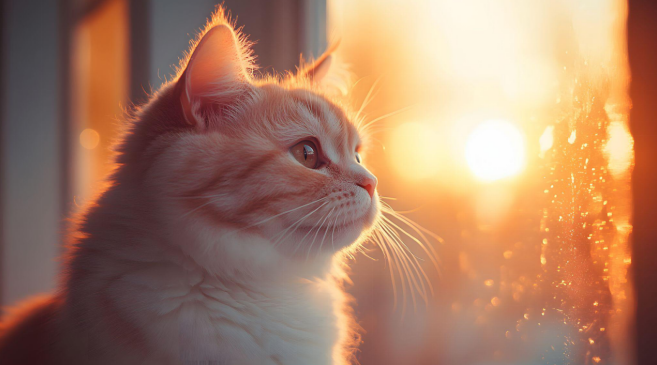
Coat color isn’t just visual—it’s genetic. And in American Shorthairs, color often tracks closely with physical health indicators, grooming requirements, and even subtle behavioral tendencies. While no color guarantees a specific trait, certain patterns do correlate with gene-linked predispositions worth understanding.
Let’s look at what your cat’s coat may be signaling beyond appearance.
Health Associations Linked to Coat Color
Certain coat colors are tied to inherited conditions—some mild, others that require long-term awareness.
● Solid White Cats: These carry the dominant white (W) gene, which masks pigment and can affect hearing. Blue-eyed whites, in particular, have a higher probability of bilateral or unilateral deafness due to inner ear developmental changes tied to the same masking gene.
● Dilute Colors (Blue, Cream, Dilute Calico): These are produced by the dilution gene (d/d). While the gene itself isn’t harmful, it can occasionally be linked to weaker coat structure or lower pigment density, which affects skin sensitivity, especially in sun-exposed areas.
● Tortoiseshell and Calico Cats: Their color distribution results from X-chromosome inactivation, and in rare male cases (XXY), this can be linked to Klinefelter-like syndrome, which leads to sterility and sometimes immune or developmental issues.
● Smokes and Silvers: These rely on the inhibitor gene, which doesn’t pose health risks but can hide early signs of skin conditions. Pale roots may mask irritation or redness until the condition becomes more advanced.
Grooming Demands by Coat Type
Most American Shorthairs have dense, short, and plush double coats. But the visibility of shedding, debris, and oil build-up varies with color and pattern.
● Dark Solids (Black, Blue): These coats highlight dander and dust, making more frequent brushing necessary to maintain appearance, especially in low-humidity environments where static builds up.
● White and Light Colors: White cats show staining easily, particularly around the eyes, mouth, and paws. Owners may need to perform localized cleaning more often to maintain coat brightness.
● Silver Tabby or Chinchilla: These coats have layered hair with light roots and dark tips. They’re prone to matting and uneven shedding if not brushed thoroughly, especially during seasonal coat changes.
● Tortoiseshell or Bi-Color Coats: These cats often have varied hair textures in different color patches, making even grooming a bit more nuanced. Some areas may shed faster or hold more oil, requiring targeted care.
Behavioral Patterns Correlated with Color
Behavior is complex and shaped by more than genetics, but studies and breeder observations have shown mild behavioral trends linked with coat color genes.
● Tortoiseshell (Tortitude): Tortoiseshell females often display higher levels of territorial behavior and sensitivity to handling. This isn’t temperament in the traditional sense—it’s possibly linked to X-inactivation variability in the brain and sensory pathways.
● Orange or Red Tabbies: These cats tend to show higher sociability, possibly influenced by sex-linked inheritance patterns. Because most red tabbies are male, hormonal factors during development may shape early behavior.
● White Cats: Some white cats—particularly those with hearing impairments—can appear less responsive or more easily startled. Adapting the environment with tactile cues or visual communication can reduce stress and improve engagement.
● Smokes and Solids: There’s no hard behavioral trait here, but breeders note that smoke-patterned cats may mature more slowly emotionally and physically, likely due to slower-growing coat types linked to their genetic profile.
Understanding how coat color correlates with deeper traits gives you a technical edge—whether you're uating breed lines, building grooming routines, or trying to decode subtle shifts in your cat’s mood or health. Genetics sets the framework, but observation and informed care fill in the details.
Coat type dictates far more than appearance—it shapes grooming schedules, care product choices, and even how you monitor for early signs of skin irritation or stress. American Shorthairs may all fall under the “shorthaired” umbrella, but their coats vary in density, texture, oil levels, and shedding cycles based on genetics and color expression.
Here’s how to handle each type with professional-level care—without wasting time or creating unnecessary stress for your cat.
● Dense Double Coats (Silver Tabby, Brown Tabby, Blue): These coats trap loose hairs beneath the top layer, making weekly brushing non-negotiable. Brushing should be done with a slicker brush and wide-tooth comb combo to lift the undercoat without scratching the skin. Pro Tip: Install a consistent feeding routine with a smart automatic feeder to align grooming with post-meal relaxation periods. American Shorthairs often resist brushing unless they’re already calm or satiated. WOpet smart feeders help you structure those calm windows precisely, with programmable portion sizes and automated scheduling.
● Light or White Coats (Solid White, Dilute Calico): White and cream coats stain easily. Tear staining, chin residue from oily food, and light debris from dust or litter trays show up fast. The grooming strategy here is more localized—targeted face and paw cleaning 2–3 times a week.
● Smoke, Shaded, or Chinchilla Coats: These are visually high-maintenance but structurally fragile. Overbrushing can damage the light-tipped fur. Use a gentle pin brush, and limit brushing to 2–3 times a week unless shedding increases seasonally.
● Patchy Texture Coats (Tortoiseshell, Bi-color): These coats often contain mixed hair types within one body—coarser in darker patches, finer in lighter ones. You’ll need to rotate between brushes and check for uneven oil buildup in the black or red zones.
Consistent care doesn’t mean more work—it means working smarter. When coat types are handled with the right tools and timing, you reduce shedding, avoid matting, and pick up on health signals early.
Coat color isn’t just a label—it’s a gateway to understanding your cat’s needs on a deeper level. Whether you're working with a silver tabby, managing a rare calico, or navigating the daily care of a tortoiseshell, the details in your cat’s coat reveal a lot. You now know how to recognize what’s common, what’s rare, and what each coat might mean for grooming, behavior, and long-term health.
When you build smart routines around that knowledge, your cat benefits—and so do you. That’s where WOpet fits naturally. From timed feedings to remote video checks, their tech supports everything a coat-conscious care routine demands.
Here’s what we covered:
● The full range of American Shorthair colors and how they form
● Which colors are dominant, recessive, or registry-approved
● Genetic factors behind rare coat types and their traits
● Health risks tied to certain color genes, like white or dilute
● How color and pattern influence coat texture, shedding, and grooming
● Pro grooming strategies by coat type, with timing and technique
● Where WOpet’s tools support routines with structure and consistency
Caring for your American Shorthair’s coat doesn’t start with the brush—it starts with knowing what that coat tells you.
Label:
Popular Post
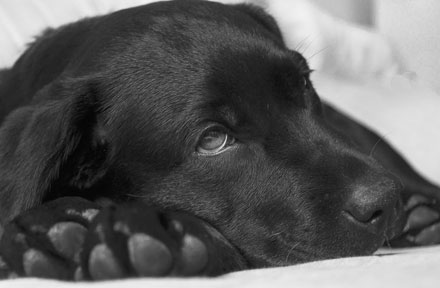
What to Feed a Sick Dog With No Appetite? [2025 Guide]
May 16, 2023

Troubleshooting Common Issues with Automatic Pet Feeders: Tips & Tricks for Pet Owners
Oct 26, 2023
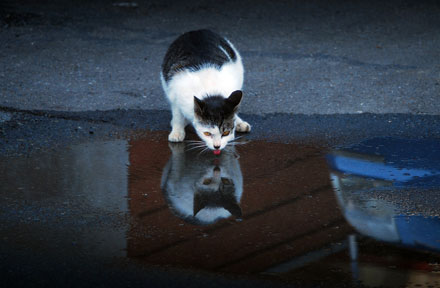
Why Does My Cat Cough After Drinking Water? 8 Potential Reasons
Mar 13, 2023
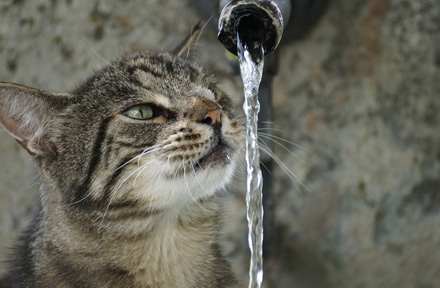
Why is My Cat Throwing up Water? Top 5 Causes Here
Feb 08, 2023
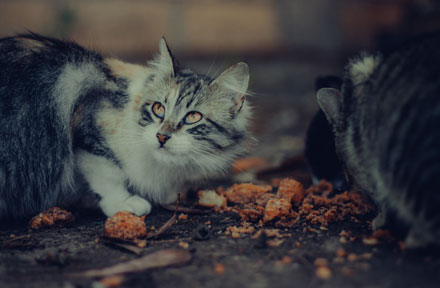
My Cat Only Eats A Little at A Time - What to Do?
Feb 27, 2023
$99.99
$129.99
Copyright © 2025 WOPET. All Rights Reserved.